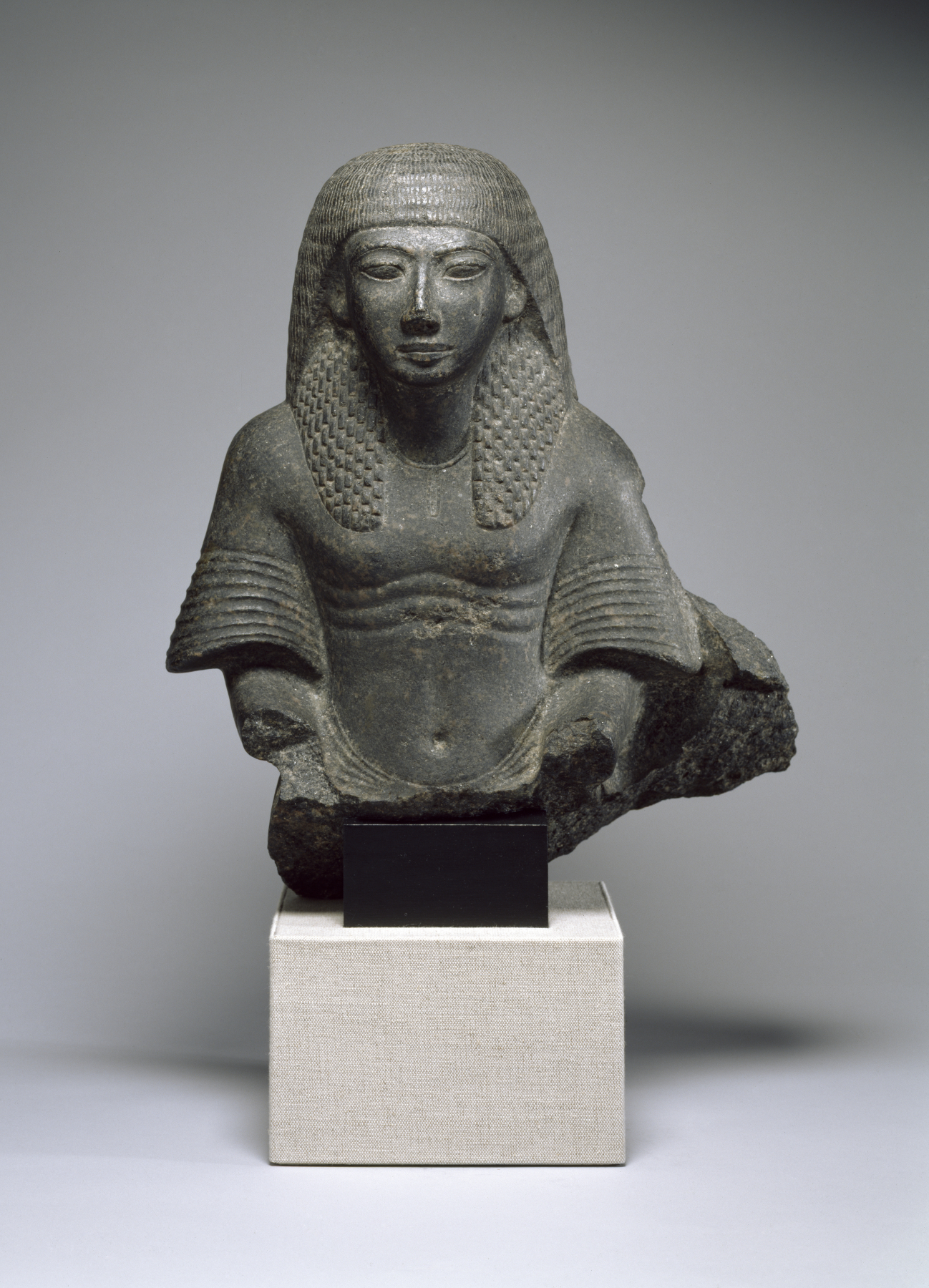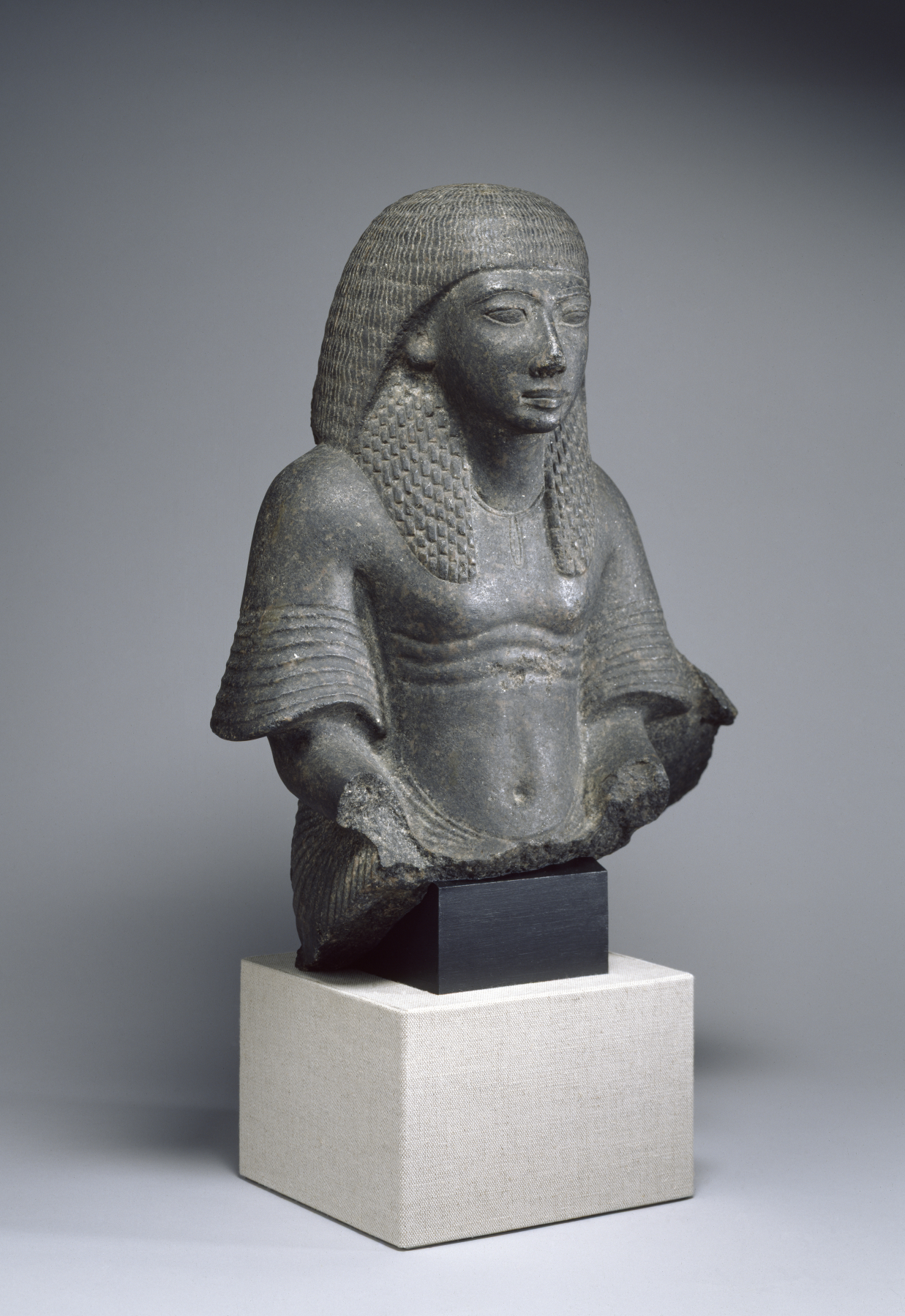Male Bust From a Group Statue
(Ancient Egypt and Nubia )
This fragment was once part of a double statue and would have probably shown the man seated with his wife to his left. His costume is the same as that worn by the royal scribe Nahu, also shown here. The three stylized flesh folds on the official's upper abdomen were a conventionalized method of showing relatively advanced age and prosperity. The remaining hieroglyphic text (on the back) mentions Ptah and Sokar, gods associated with ancient Memphis, suggesting that this sculpture came from the official's tomb at Saqqara, which was the primary necropolis, or cemetery, of Memphis.
Inscription
Provenance
Provenance (from the French provenir, 'to come from/forth') is the chronology of the ownership, custody, or location of a historical object. Learn more about provenance at the Walters.
Dikran Kelekian, New York and Paris, [date and mode of acquisition unknown]; Henry Walters, Baltimore, 1929, by purchase; Walters Art Museum, 1931, by bequest.
Conservation
| Date | Description | Narrative |
|---|---|---|
| 7/14/1967 | Treatment | cleaned; loss compensation |
| 6/24/1971 | Treatment | cleaned |
| 8/25/1998 | Examination | condition |
| 5/22/2000 | Examination | condition |
Measurements
17 1/8 x 14 3/4 x 7 1/16 in. (43.5 x 37.5 x 18 cm)
Credit Line
Acquired by Henry Walters, 1929
Location in Museum
Accession Number
In libraries, galleries, museums, and archives, an accession number is a unique identifier assigned to each object in the collection.
In libraries, galleries, museums, and archives, an accession number is a unique identifier assigned to each object in the collection.
22.111




